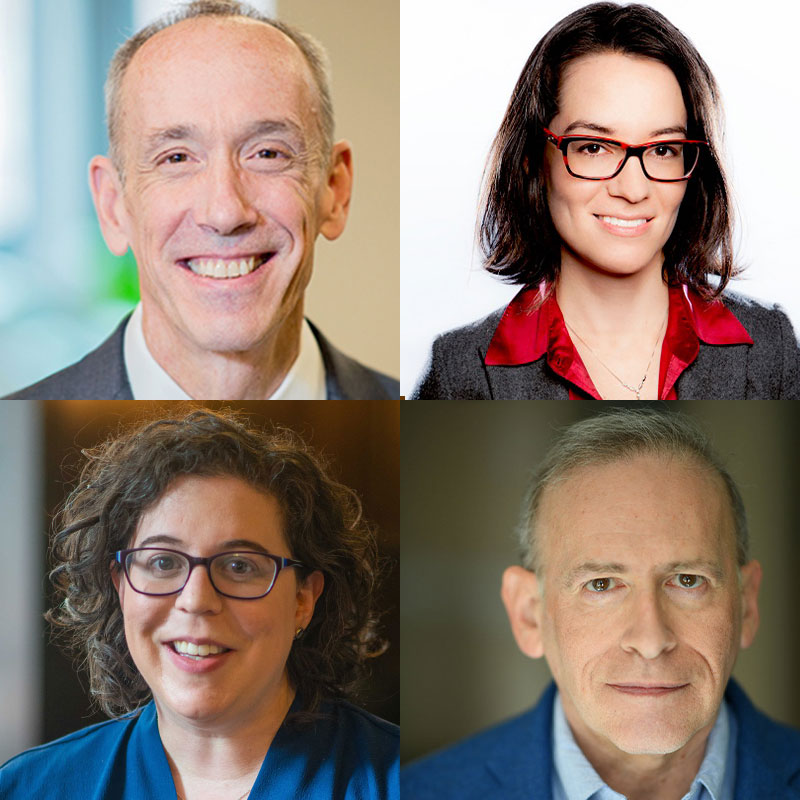Teachers College has received two prestigious five-year grants from the federal Institute of Education Sciences (IES), totaling nearly $6.3 million. The grants were submitted and received through the College’s Community College Research Center.
IES is the statistics, research and evaluation arm of the U.S. Department of Education.
A $3.5 million IES predoctoral interdisciplinary research training grant will support doctoral training for a small group of selected Ph.D. students pursuing careers in applied research focused on post-secondary education. During the first year of the funding, the College will recruit qualified applicants. Over the following three years, the grant will fund three cohorts of five students each, covering each student’s tuition and all fees, and providing a living stipend and money to attend research conferences. Under the terms of the grant, the College will provide an additional $1.5 million in funding to the student recipients.
We’re very proud to join an elite group of recipients that has typically included institutions such as Harvard, Northwestern, and the University of Chicago. We’re also very pleased to be able to provide the eventual student recipients with this level of assistance, which is greater and more comprehensive than what TC has been able to provide in the past.
— Thomas Brock
“The predoctoral research training grants are very competitive, and TC has never received one before,” said Thomas Brock, CCRC Director, who is Principal Investigator on the grant together with co-PIs Aaron Pallas, Arthur I. Gates Professor of Sociology & Education, and Sarah Cohodes, Associate Professor of Economics & Education. “We’re very proud to join an elite group of recipients that has typically included institutions such as Harvard, Northwestern, and the University of Chicago. We’re also very pleased to be able to provide the eventual student recipients with this level of assistance, which is greater and more comprehensive than what TC has been able to provide in the past.”
[Learn more about The Postsecondary Education Applied Research (PEAR) Fellowship, which provides doctoral students with training in advanced quantitative analysis and the practical skills needed for a career in applied research in postsecondary education.]
A $2.8 million IES research grant will fund the first-ever comprehensive evaluation of the Federal Work-Study program, one of the nation’s oldest student aid programs, which typically provides part-time employment to undergraduate, graduate and professional students with financial need. Nongovernmental sources will provide an additional $509,000 to support the effort.

TEAM EFFORT Winning the new IES grants was the result of collaboration among faculty from several departments, including (clockwise from top left), Thomas Brock, Director of TC's Community College Research Center; Judith Scott-Clayton, Associate Professor of Economics & Education; Aaron Pallas, Arthur I. Gates Professor of Sociology & Education; and Sarah Cohodes, Associate Professor of Economics & Education. (Photos: TC Archives)
The study will be conducted with a large, urban multi-site public college system in the Northeast. Led by Judith Scott-Clayton, Associate Professor of Economics & Education, with co-PIs Brock and Adela Soliz, Assistant Professor of Higher Education and Public Policy at Vanderbilt University’s Peabody College, it will assess both the short- and long-term outcomes of work-study jobs. These will include whether students achieve higher grade-point averages while holding work-study funding, and whether they are more likely to re-enroll in college the following year, as well as their rates of college completion, kinds of employment and salaries.
[Click here to visit the IES site for more details on the new predoctoral interdisciplinary research training grant. Click here to visit the IES site for more details on the new grant that will fund the Federal Work-Study evaluation.]
Below, Pallas and Cohodes discuss the new predoctoral training grant, and Scott-Clayton describes the new work-study program evaluation in more detail.
Raising TC’s Research Game: Supporting doctoral students could strengthen a culture of collaboration and boost research productivity
At the very least, the new $3.5 million training grant will enable TC to send 15 highly trained and well-connected new scholars out into the field of post-secondary education research.
“In the past, IES required applicants to have traditional research apprenticeships under faculty, but this time, placements will also be practice-based, in state agencies, nonprofits, and other organizations,” says Pallas. “CCRC excels at these kinds of field placements, because they have relationships with a wide range of organizations. One reason we won this grant was because we got support from nine different state higher education agencies around the country, including in New York, Florida, Texas, Ohio and California.”
We hope the College adopts this approach not only as a curricular model but also for building relationships among students, between students and faculty, and between students and external partner organizations.
— Sarah Cohodes
Cohodes adds that recipients of the awards will learn different methods — quantitative, cost-benefit, mixed-methods, and randomized controlled studies — for “conducting research that supports causal inferences.”
Grant recipients, who will be selected from the College’s Departments of Education Policy & Social Analysis, Human Development and Organization & Leadership, will have a wide range of freedom in choosing their dissertation topics.
“We’ll obviously want to see a connection to post-secondary education, but it can be at any point in the student life cycle, from prior schooling to college attendance to outcomes of post-secondary education,” Cohodes says.
A “hands-on” seminar, complete with a guest speaker series, will also acquaint cohorts with the processes of getting grants and creating successful real-world partnerships. “The goal is to get at the hidden curriculum of how to become a successful researcher,” she says.
But Pallas and Cohodes foresee a broader impact for the grant, as well.
Other institutions that receive these grants are able to sustain them for multiple cycles. That requires significant matching funds from the institution — but if, as we expect, these fellowships enable faculty and students to get more high-quality grant applications into the pipeline and, ultimately, win more grant funding, that obviously benefits the College as a whole.
— Aaron Pallas
“Ultimately, if all we accomplish is supporting 15 students, that will be a disappointment,” Pallas says. “We want to institutionalize these processes and relationships for years to come.”
One anticipated benefit is to strengthen a culture of collaboration inside and outside TC.
“We hope the College adopts this approach not only as a curricular model but also for building relationships among students, between students and faculty, and between students and external partner organizations,” Cohodes says.
Pallas points to the potential for greater research productivity College-wide.
“Other institutions that receive these grants are able to sustain them for multiple cycles,” he says. “That requires significant matching funds from the institution — but if, as we expect, these fellowships enable faculty and students to get more high-quality grant applications into the pipeline and, ultimately, win more grant funding, that obviously benefits the College as a whole.”
Does Work-Study…Work? After half a century, an effort to peer into the black box of a billion-dollar student aid program
The Federal Work-Study program (FWS) was created in 1964 as part of the Economic Opportunity Act and currently provides roughly $1 billion in funding annually to eligible students nationwide. It serves over half a million students each year, including one out of every 10 full-time undergraduates.
Yet, as Judith Scott-Clayton wrote in a 2017 article for The Brookings Institution, “FWS today is no longer of great significance in terms of helping students finance the cost of college,” having been far outstripped in size and impact by Pell Grants and federal student loans. “As award amounts have atrophied and tuition and fees have skyrocketed, today’s typical FWS award now covers only 16 percent of today’s average public tuition and fees.”
Why has a program often touted for its bipartisan appeal suffered this fate?
Because, basically, no one knows if it really works.
“There’s simply not a great body of rigorous evidence on who it helps and how much,” Scott-Clayton says.
To answer those questions, Scott-Clayton’s study will enroll at least 7,200 low-income, work study-eligible students over a three-year period, comparing those who receive work-study against a control group that does not.
The new grant builds on the research team’s previous grant from the Laura and John Arnold Foundation, which enabled them to initiate the study and begin collecting data on students. The new funding will enable them to conduct focus groups, surveys and one-on-one interviews with administrators about how work-study functions on their campuses.
We’ve heard that some schools get so little work-study money compared to their eligible populations that it may not be worth it for them to have a highly detailed structured plan. They work on more of a first-come, first-served basis. So we’re digging into what it really takes to have a sophisticated, well-designed program.
— Judith Scott-Clayton
“The money comes to individual institutions, and each institution administers it,” she explains. “They have guidelines and regulations to follow but also a fair amount of discretion and flexibility. So it can look very different at each institution.
“For example, we’ve heard that some schools get so little work-study money compared to their eligible populations that it may not be worth it for them to have a highly detailed structured plan. They work on more of a first-come, first-served basis. So we’re digging into what it really takes to have a sophisticated, well-designed program.”
Scott-Clayton hopes to address some long-standing questions about work-study.
“There’s research that suggests that working while you’re enrolled in school can be harmful to your academic persistence and performance, and that’s certainly of concern. But many of the students who receive that aid may have needed to work anyway. The question then becomes, is it helpful to be on a campus, where work-study jobs are limited to 15-20 hours per week and where the job quality may be better?”
Proponents also argue that work-study jobs enable students to spend more time on campus, making them feel more engaged and connected to the school community.
“We’ll be looking at that, though of course with COVID, the issue of being on campus is up in the air right now. Yes, students will definitely be receiving work-study aid this year, but many jobs can be done remotely. And we don’t know whether every student receiving work-study funding will actually be working in a traditional way.”
Scott-Clayton says she feels a particular sense of responsibility in conducting this study.
“If our findings about work-study are negative, that could affect funding for a lot of students. That’s why it’s so important to do the additional work on how the programs are implemented, so that we can interpret whatever results we find. We’ll need good information about how it’s being run so that we can identify areas for positive change.”
— Joe Levine
